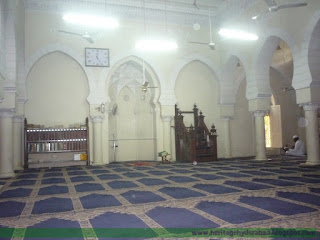I have met people who have been living in Hyderabad for decades but havent seen Golconda Fort or the Qutb shahi tombs.It always amazes me as to how could they ignore the centuries old evidence of our culture and history.They all give the same reason.'we arent running off to someplace we will watch it sooner or later'.'uska bhi waqt ata yaro!'(typical hyderabadi nizami attitude).To be frank even i had this attitude for a heritage building close to where i live(since the building in question is relatively not that signifiucant compared to the monuments i mentioned above i have forgiven myself in my court of justice)
Finally last friday I decided i had enough of this and went off to Yousuf Tekri building,along with shoaib.It is located on the tolichowki-mehdipatnam road,adjacent to the mamu's food joint.This building belonged to Nawab Yousufuddin Khan,a subedar of Gulbarga,during the reign of the sixth Nizam Mir Mehbub Ali Khan.It is built in the form of a castle and is more than 120 years old.I was surprised on seeing the interiors.Some people were putting on paint on the walls and the whole place looked beautiful.On asking I was informed that this painting was for a movie shoot that was going to take place in few days.I learned later that this is a favorite location for shooting movies.
There is no problem in going and seeing the building.You need no permission and nobody will stop you there.
Finally last friday I decided i had enough of this and went off to Yousuf Tekri building,along with shoaib.It is located on the tolichowki-mehdipatnam road,adjacent to the mamu's food joint.This building belonged to Nawab Yousufuddin Khan,a subedar of Gulbarga,during the reign of the sixth Nizam Mir Mehbub Ali Khan.It is built in the form of a castle and is more than 120 years old.I was surprised on seeing the interiors.Some people were putting on paint on the walls and the whole place looked beautiful.On asking I was informed that this painting was for a movie shoot that was going to take place in few days.I learned later that this is a favorite location for shooting movies.
There is no problem in going and seeing the building.You need no permission and nobody will stop you there.














